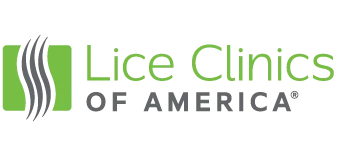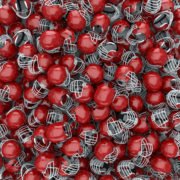Head Lice Tips For Your Little Athlete
When a head lice outbreak hits, it tends to spread like wildfire if children have been playing together. A common side effect of head lice is a big headache for the parents. The number one goal is to get rid of head lice, and get rid of it fast.
In light of Super bowl LI coming up, let’s talk about some common ways athletes can contract head lice.
Sharing Helmets
If you hear about a head lice outbreak at your child’s school, a good rule of thumb is to not let your little athlete share a helmet or baseball cap with any teammates or friends. Head lice can survive in the hair long-term. They can also survive for up to two days elsewhere. This is why sharing equipment with someone who has head lice can lead to an outbreak. So… sharing isn’t always caring. Do what you can to dodge the head lice contagion.
Sharing Brushes and Combs
Your child might be a dancer, soccer player, basketball champ, volleyball star or an all-star of a different sport. Perhaps it’s a common ritual to get ready with the team before a game or event. As part of that ritual, are they sharing brushes and combs? Be careful when sharing your brush and comb because if someone with head lice uses it and then you use it after them, you will likely become infested with head lice. Also, we know you want to document these fun occasions and take lots of selfies but beware of team selfies as head-to-head contact is another way to contract head lice. All those little head lice critters want to do is find their way to a new head and lay eggs. Bring your own brushes and combs to those fun events and don’t share them. It’s better to be safe than sorry.
Huddles
Huddles aren’t only in the movies. It’s a tradition that goes back to 1980, according to an article published by The Week. The tradition formed when quarterback, Paul Hubbard of Gallaudet — a deaf college in Washington, D.C., now a university, had his team form a tight huddle so they could discuss the plays in sign language without the other team being able to see. As cool as the origin of this tradition is, Hubbard certainly wasn’t thinking about head lice when he began one of the most well-known sports traditions of all time. Kids must be careful when bumping heads in a huddle because head lice could certainly spread as soon as heads touch. We aren’t saying don’t participate in the huddle — that’s no fun. We are just saying to use caution. For instance, you can still huddle and get close without making head-to-head contact.
Bring Your Own Stuff
I’m sure your child is ecstatic about their away game coming up. They get to take a trip with their friends and shoot for victory — what an awesome experience. You want it to be an enjoyable experience for them and take our word for it — head lice are not enjoyable. Make sure they bring their own stuff. This also applies to sleepovers at friends’ houses as well. To be safe, make sure they bring their own sleeping bag, pillow, hats, scarves and jackets. It’s a safe practice not to share things that head lice could transmit from. When in doubt, don’t go without. Bring your own stuff!
Sterilize
Has there been head lice outbreaks on your child’s team? Well, you can never be too careful so sterilizing the items your child uses on a regular basis is a good idea — or make them clean it. Head lice aside, it’s a good idea to clean on a normal basis anyway, right? Because kids aren’t always the cleanest creatures. Even if there are no head lice around you, what’s there to lose? You always feel better in a clean environment anyways. Clean their sheets, blankets, pillow cases, combs, hair brushes, hats and anything else that may come in contact with head lice. When your child gets back from a sleepover, check their heads, wash their stuff, be wise and sterilize.
Don’t deprive your little athlete of having all the fun experiences that a child should have. Be aware and conscience of this common childhood contagion. Have fun cheering for your little all-star. If they do happen to catch head lice — give us a call and we’ll take care of it for you.











